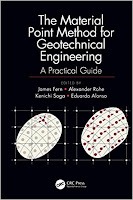Principles of Applied Civil Engineering Design: Producing Drawings, Specifications, and Cost Estimates
Ying-Kit Choi ... 380 pages - Publisher: American Society of Civil Engineers (ASCE); 2nd edition (September, 2017) ... Language: English - AmazonSIN: B075MS7M9Q.
Principles of Applied Civil Engineering Design: Producing Drawings, Specifications, and Cost Estimates for Heavy Civil Projects walks engineers through standard practice and basic principles needed to prepare quality design and construction documents for a successful infrastructure project. Drawing on more than 30 years of engineering and design experience, Ying-Kit Choi helps readers understand the interrelationships among contract documents, site characterization, design and construction documents, and construction cost estimates. Choi introduces the fundamentals and process of applied engineering design, including the necessary field investigations to characterize a project site. He provides pragmatic guidance on the "how-to" of producing construction drawings, with advice on graphical representation; legends, abbreviations, and notes; drawing techniques and software; and certification of construction drawings. He offers a wealth of details on developing technical specifications, including good writing practices, types of construction specifications, the standardized Construction Specifications Institute format, measurement and payment provisions, and reference data. Chapters on cost estimating cover quantity estimates, pricing estimates, allowances and contingencies, and bid evaluation. A handy glossary defines common terms.
This second edition reflects the rapid changes in the methods and tools used to produce design drawings, updating the discussions of presentation formats and technical resources. Of particular interest, the 2014 Construction Specifications Institute format is introduced for use in preparing specifications and estimating construction costs. Nine chapters encourage readers to test their comprehension with example problems and solutions. By setting out the guidelines, principles, and philosophy needed to produce design and construction documents for heavy civil projects, Choi assembles an excellent introduction for civil engineering students and young professionals, as well as provides a valuable reference for experienced design engineers, contractors, and project owners.











